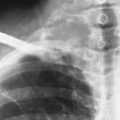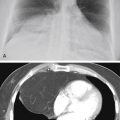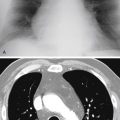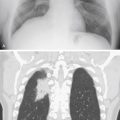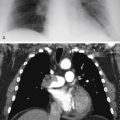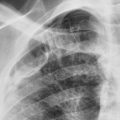Abstract
Analysis of a chest x-ray requires careful review of the image to develop an accurate perception and description of the abnormalities. The basic patterns of opacities or lucent abnormalities should be combined with precise anatomic localization as the starting point toward making a diagnosis. The steps toward confirming the diagnosis frequently require consideration of a list of differential diagnoses, correlation with the clinical facts, and a number of additional radiologic and laboratory tests. This text guides the reader through 23 exercises that are designed to illustrate the most common patterns of disease seen on chest x-rays and CT scans.
Keywords
categories of disease, chest radiograph, chest x-ray, CT scans, patterns of chest disease
The simplicity of performing a chest radiograph often leads to the mistaken impression that interpretation should also be a simple task. Despite the fact that the chest radiograph was one of the first radiologic procedures available to the physician, the problems of interpreting chest radiographs continue to be perplexing as well as challenging. The volume of literature on the subject indicates the magnitude of the problem and documents the many advances that have been made in this subspecialty of radiology. A casual review of the literature quickly reveals the frustrations a radiologist encounters in evaluating the numerous patterns of chest disease. There are as many efforts to define the patterns identified on chest radiographs as there are critics of the pattern approach. Because radiologists basically view the shadows of gross pathology, it is not surprising that the patterns are frequently nonspecific and that those who expect to find a one-to-one histologic correlation of the radiographic appearances with the microscopic diagnosis will be frustrated. It is much more important to develop an understanding of gross pathology to predict which patterns are likely in a given pulmonary disease. With this type of understanding of pulmonary diseases, we are better qualified to use nonspecific patterns in developing a differential diagnosis and planning the procedures required to make a definitive diagnosis.
Colonel William LeRoy Thompson of the Armed Forces Institute of Pathology first developed the concept of differential diagnosis based on radiologic findings. Later, Reeder and Felson amplified and popularized the approach in their book Gamuts in Radiology by providing an extensive list of the various patterns and the corresponding differential diagnoses. 467
This manual illustrates the common patterns of chest disease to facilitate recognition. After recognition, the second step in evaluating a pattern is to develop an appropriate differential diagnosis. The complete differential diagnosis must include all of the major categories of disease ( Chart 1.1 ) that might lead to the identified pattern. Next, the differential must be significantly narrowed by (1) careful analysis of the image for additional radiologic findings, (2) consideration of the evolving patterns of the disease by review of serial examinations, and (3) correlation of patterns with clinical and laboratory data ( Chart 1.2 ). With this narrowed differential, we will be able to function as consultants, suggesting further procedures that may lead to a precise diagnosis. These procedures vary from simple radiographic examinations, such as those taken with the patient in oblique positions, to percutaneous biopsy under fluoroscopic, computed tomography (CT), or ultrasound guidance.

